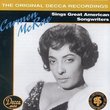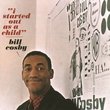| All Artists: Takemitsu, Tsuruta, Mdih, Yokoyama Title: In an Autumn Garden (Dig) Members Wishing: 2 Total Copies: 0 Label: Deutsche Grammophon Release Date: 8/13/2002 Album Type: Original recording reissued, Original recording remastered Genre: Classical Styles: Chamber Music, Historical Periods, Classical (c.1770-1830) Number of Discs: 1 SwapaCD Credits: 1 UPC: 028947159025 |
Search - Takemitsu, Tsuruta, Mdih :: In an Autumn Garden (Dig)
CD DetailsSimilarly Requested CDs
|
CD ReviewsBy far the most alien of Takemitsu's work, but also some of Christopher Culver | 01/29/2007 (5 out of 5 stars) "I've listened to contemporary music for years and am at home with even the bleep-bloopiest of serialist piano music, the randomly generated lines of Xenakis, or the fiercely ugly tuttis of middle-period Carter. But then I found the greatest musical challenge yet in... World music? This Deutsche Grammophon disc, part of their "Echo 20/21" series of modern-classical reissues, brings back into print some of Toru Takemitsu's pieces for traditional Japanese instruments. It is a soundworld alien to a lover of Western classical music, even in its 20th-century avant-garde developments, but just listen and you'll start to hear magic. The disc starts off with one of the more accessible of these pieces. "In an Autumn Garden" (1973) is scored for gagaku orchestra, the traditional ensemble of the Japanese court. Written in six sections, it has a readily audible structure, but what makes it sound so remarkable is its total lack of fast movement. Takemitsu famously quipped that the Japanese have no sense of allegro time, and "In an Autumn Garden" is a series of slow, deliberate movements. Short, simple strumming on strings gives way to a solo on flute, and the climax is a collection of utterly tranquil birdsongs. But this lack of action isn't like what later came to dominate in Takemitsu's late period. The orchestral works Takemitsu produced after 1975 are, with some exceptions, just boring, while the pauses here leave the listener in suspense. "Voyage" (1973) is for three biwa, the short-necked fretted lute of Japan. What one first notices about this piece is the exploitation of the performance space, where an attack on one biwa might be answered by another, or when left and right play staccato while the center biwa plays aggressive strumming. There are two extracts here from Takemitsu's two concertos for shakuhachi--the Japanese notched flute--and biwa and Western orchestra. "November Steps" (1967) was one of the composer's greatest achievements, where the Japanese instruments and the Western ensemble are incapable of finding rapproachment, and speed off in opposite directions. Recordings of that work are regrettably now out of print, though there is a Philips disc where Seiji Ozawa leads the Saito Kinen Orchestra that's still around on the used market (avoid the Arkiv Music offering, it's a CD-R with no liner notes). The extract on this disc is the cadenza for solo biwa and shakuhachi. Like the larger work, the extract here for the soloists is often aggressive, and even these two instruments from the same cultural background don't see eye to eye. I have never heard "Autumn" (1973), the other mix of Eastern and Western sounds, in its entirety, though I know that here Takemitsu was trying to reconcile the two traditions. This is a much more tranquil extract than the last, looking ahead to the gentle "sea of tonality" that Takemitsu embarked upon in the last phase of his career. The disc ends with one of Takemitsu's first forays into the biwa and shakuhachi, the duo "Eclipse" (1966). In a sense this returns us to the clearly delineated soundworld that opened the disc, a straightforward progression where flute and lute slowly work towards an expansion of material. The sound of these recordings is superb, one would never guess that they were originally put down in 1974-75. Unfortunately, the liner notes consist of only three pages of fairly unsubstantial remarks. Those who want to know more about these pieces and Takemitsu's total oeuvre would best seek out Peter Burt's THE MUSIC OF TORU TAKEMITSU (Cambridge University Press, ). Ideally this disc is left to those with a passion for traditional Japanese music and want to see how it evolved in the 20th century, or those who have already started to build a Takemitsu collection. More representative introductions to Takemitsu can be found on Deutsche Grammophon's QUOTATION OF DREAM or Sony's FROM ME FLOWS WHAT YOU CALL TIME. The amount of concentration and open-mindedness these exotic pieces require means that this disc isn't for everyone, but I for one grow more passionate about it by the day." Finally yipyipcoyote | 09/05/2002 (4 out of 5 stars) "The sticker on the wrapper says 'First International Release', although the Denon discs with the Tokyo Metropolitan Symphony are still available, if you look hard enough. Not sure if these are the same recordings though. Anyway the 96kHz/24bit remastering has really done justice to them, as with all the releases in the 'echo 20/21' series issued by DG. First track 'In An Autumn Garden', for gagaku orchestra, is the only large(ish) scale work here, the others all being chamber works - 'November Steps' and 'Autumn' have been excerpted to include only the biwa and shakuhachi solo passages. The tracks flow into one another so smoothly you hardly even notice where one work finishes and the next one starts. The mood is definitely serene and meditative. Having said that, this disc is probably only for those that are interested in traditional Japanese culture."
|







